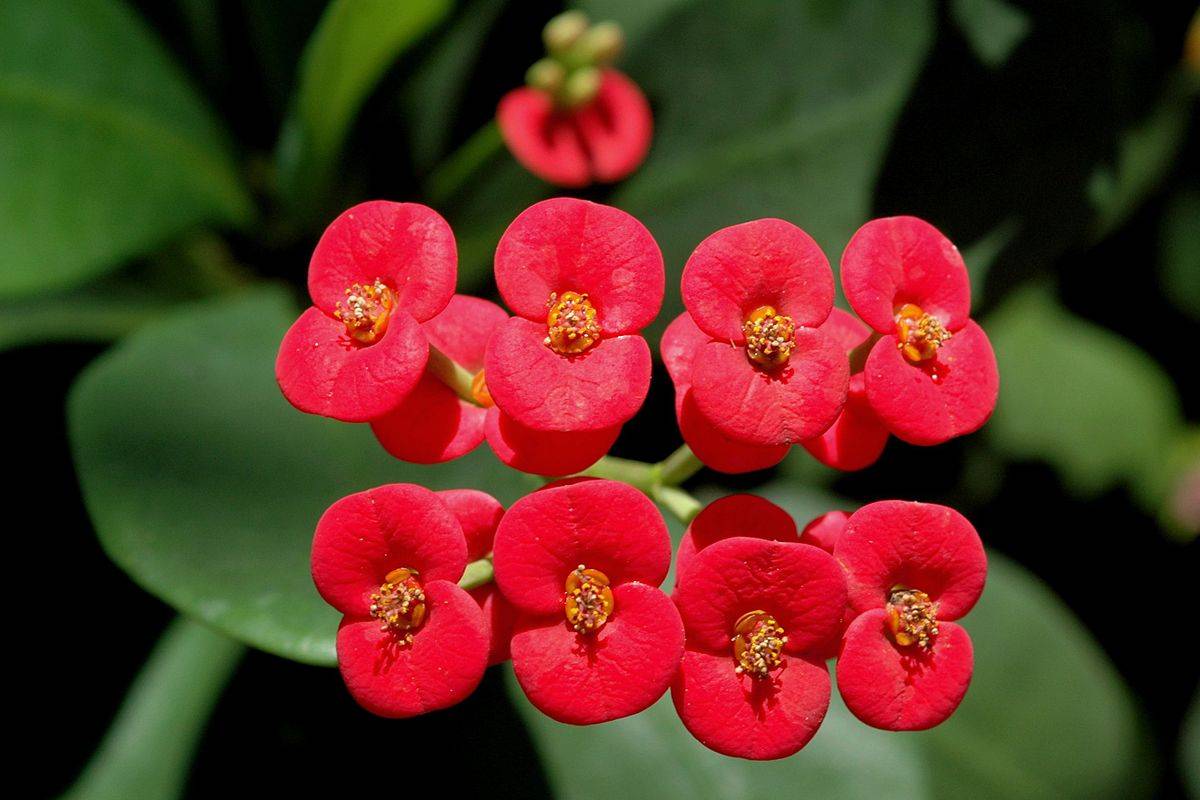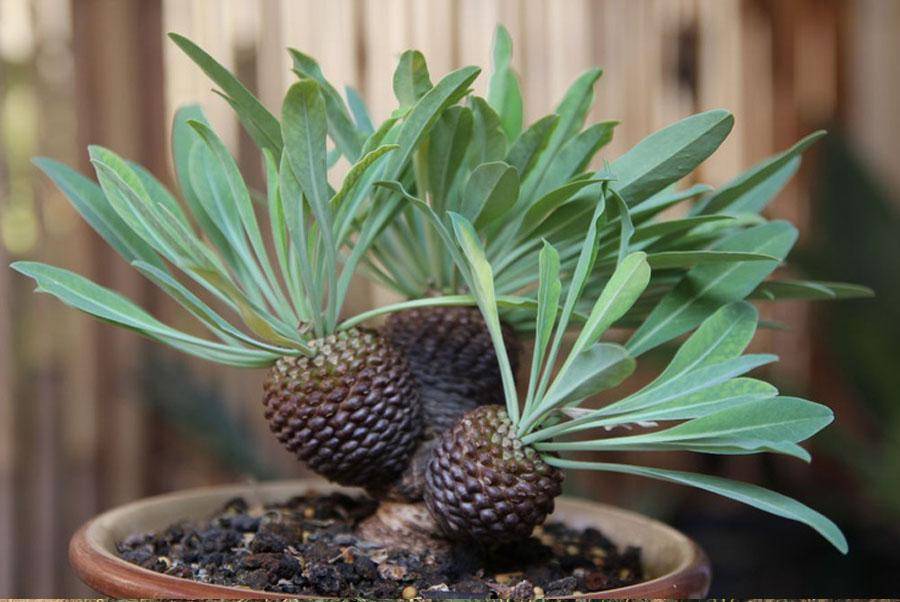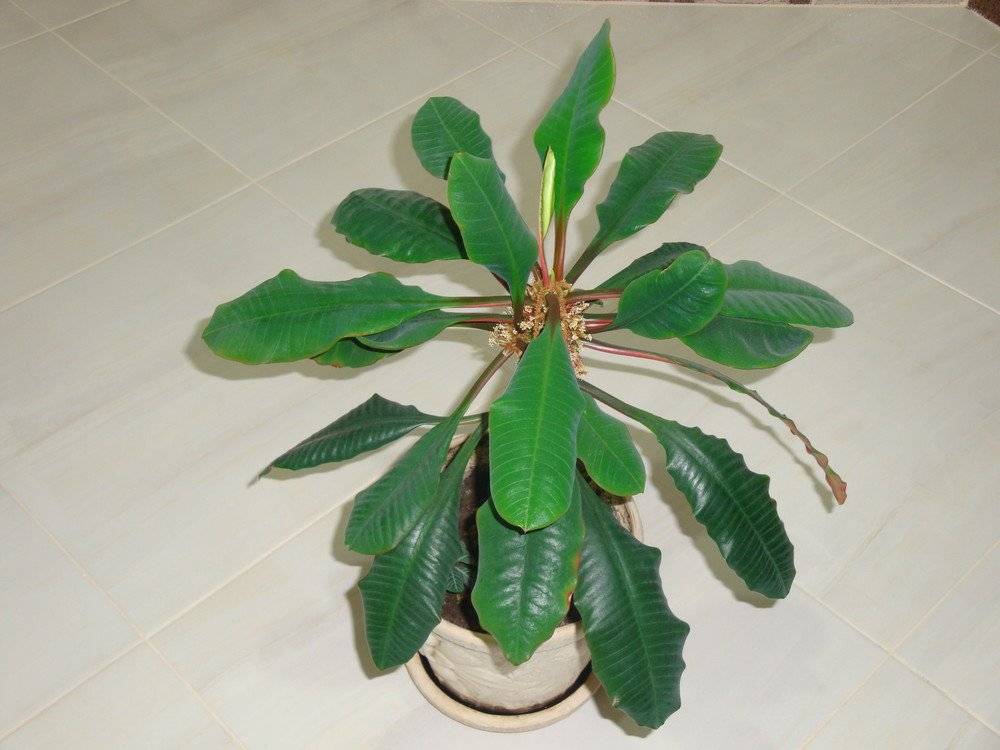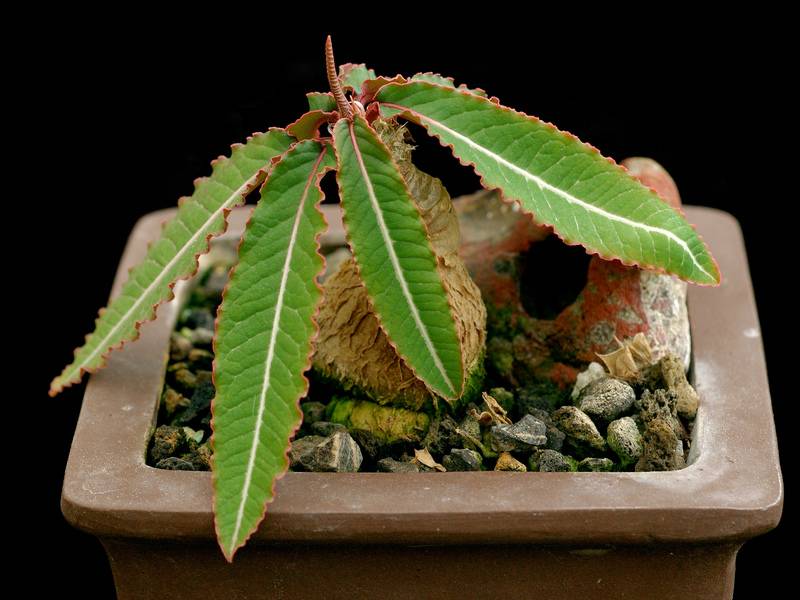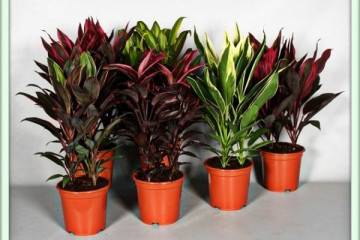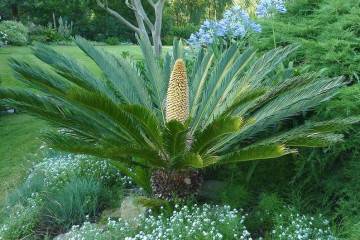Euphorbia flower - how to care?
Content:
The variety of indoor plants allows everyone to choose what suits and likes best. Euphorbia is a flower that has many types, but only a few of them can be grown at home. With good care, the plant will delight even with flowering.
What does euphorbia look like?
Euphorbia is a flower belonging to the Euphorbiaceae family, in which there are about 2 thousand different plants.
Briefly about the history of appearance
The genus euphorbia includes various annuals and perennials, palms and shrubs, and cacti. At home, only 160 species of the entire family can be grown.
The variety of plant species allows you to use it for decoration in personal plots. Indoor and outdoor types of euphorbia are completely unpretentious and do not require serious care. The appearance of a flower differs depending on its species. However, there are general characteristics:
- the height varies from 30 to 100 cm, depending on the variety;
- the stems can be both thin and thick, there are small thorns;
- the leaves are thin and located throughout the trunk, most on the crown, the surface of the leaves is smooth;
- the complete absence of foliage is possible;
- the roots have ramifications, the system itself is fibrous.
The trunks of milkweed differ in the number of edges. For example, the euphorbia of Trigon is triangular or triangular, and in the species Euphorbia Cereiformis, the number of faces can reach 15.
The main difference between milkweed and cacti is the presence of milky sap in all plants of this family. The full chemical properties of the juice have not been studied, however, it is known that it contains a poisonous substance - euphorbin, which causes burns of the mucous membranes and irritation. In the wild, animals try to bypass euphorbia. When breeding at home, it is recommended to be careful and watch out for children and animals.
Main varieties for home and garden cultivation
There are quite a few types of euphorbia. They are similar, but there are still some differences.
Mille spurge (Euphorbia milii)
Euphorbia (Euphorbia) Mil is considered one of the most beloved species of all flower growers. The second name is the crown of thorns. It is a low shrub with dark green thorns and leaves. Small flowers can be pink, red and even white.
Euphorbia (Euphorbia leuconeura)
The homeland of the plant is the island of Madagascar. A spectacular and tall plant in the wild reaches one and a half meters.Gradually, spurge began to grow in botanical gardens and parks. Euphorbia Leuconeura is very similar to a palm tree: the trunk is pentahedral and powerful, the leaves are located at the top of the head.
Small white flowers. The seeds are formed in capsules, when ripe, they fly apart and take root well in the soil.
Cereus euphorbia (Euphorbia cereiformis)
The plant looks like the Cereus cactus, for which it got its name. It is a shrub up to 1 m high, has erect branches. The number of ribs on them can reach 15, the width is up to 5 cm. The spines have a gray tint, their length is up to 2 cm. Small leaves become dry very quickly.
Abyssinian spurge (Euphorbia acrurensis)
Abyssinian spurge is a perennial plant native to Africa. Shoots have from 4 to 8 flat and wide ribs, the veins are pronounced. In the wild, it can reach a height of 9 meters. Prefers dry and stony soils.
At home, euphorbia Akrurensis can reach a meter, the jagged edges are covered with small brown spines. In adulthood, lateral shoots are formed, resembling the main trunk.
Euphorbia Gabizan (Euphorbia gabizan)
The plant is grown only in pots. The trunk of the euphorbia Gabizan reaches 30 cm and looks like a pineapple. At the top, green leaves grow, which are flat and rounded. With age, the trunk becomes brown and woody. Reproduction is possible by shoots or seeds.
Caring for a euphorbia flower at home
Despite the fact that the culture is unpretentious, many are interested in what kind of euphorbia care at home requires. It is important to consider some of the features of growing, watering and transplanting.
Illumination and temperature conditions
Euphorbia is considered a light-loving plant; it is better to put the pot on the south side. However, do not leave the flower in direct sunlight for a long time.
Lack of light in winter leads to the fact that the shoots are strongly stretched, lose their decorative effect. In the warm season, almost all species feel great outdoors.
In summer, the optimal temperature is 22-25 ° С, in winter the flower feels fine at 16 ° С.
Watering rules and humidity
The frequency of watering depends on the type of plant. However, euphorbia (a cactus in this regard resembles) does not require a large amount of moisture. She needs 1 irrigation per month during the winter period. It is important to monitor the condition of the soil, it should not dry out too much. In the summer and during the flowering period, the amount of watering is increased.
Low humidity works well for a flower, but they like spraying with warm water. In addition, this action helps to rid the plant of dust.
Top dressing and soil quality
For milkweed, a special soil for succulents is suitable. At home, you can mix leaf, grain soil and peat. For a euphorbia flower, the soil should not be too dense, but not loose. Sand should be added to it; broken brick or perlite is taken in the form of a baking powder.
Flower container size
The container should be suitable for the size of the flower. It should be voluminous, but not deep, because the root system of euphorbia is superficial.
Pruning and replanting
Euphorbia does not need pruning. In some species, extra shoots are removed so that they do not grow. On Milkweed, they pinch the crown of the head, this stops the upward growth and enhances the appearance of new shoots.
You can prune the plant after it has bloomed, remove the old leaves, and then form the crown.
It is possible and necessary to transplant euphorbia every year. Old and large specimens are transplanted every 2-3 years after the root system has grown. It is best to plant in the spring.
Flowering and dormant period of the plant
Blooming in the house is noted quite rarely, often the culture is multi-flowered. To get the culture to discard the buds, it is recommended to properly care for and adhere to the following requirements:
- suitable lighting;
- regular watering;
- regular feeding;
- periodic pruning.
Types and shape of flowers
A large number of milkweed species bloom with small lemon-green flowers. The flowering period lasts about 2 months, after which there is a dormant time.
Depending on the species, the flowers can be of different sizes and have different colors of the petals: from white to red (in poinsettia).
How to propagate euphorbia by cuttings
Propagation by cuttings is best done in late May or early June. From a young branch, you need to separate a healthy shoot, let the poisonous juice drain. The cut needs to be treated with activated carbon. The cut off process is left to dry for a couple of days.
After this time, the sprout is planted in prepared soil, watered well. After a month, the cutting will take root, and it can be transplanted into a suitable container or into open ground. For young euphorbia-milkweed plants, home care is the same as for adults.
Possible problems in growing milkweed
Most plant species have excellent immunity and are rarely affected by pests and diseases. However, with poor-quality care, a deterioration in the condition of the flower is not excluded.
Are there diseases and pests
With excessive watering and drafts, yellowing and foliage may fall. During the processes of flower decay, brown spots appear on the leaves. It is recommended to cut back on watering and move the pot to a dry and warm place.
A sharp drop in foliage indicates a possible lack of phosphorus. In such a case, it is imperative to feed the euphorbia.
The plant can be affected by the scale insect, whitefly, mealybug. For processing, folk remedies or special preparations are used, diluted according to the instructions.
Euophobia, or euphorbia, is an interesting and unpretentious plant that even an inexperienced gardener can grow. The flower does not require serious care, it is unpretentious to the conditions. If desired, you can even achieve flowering at home.

